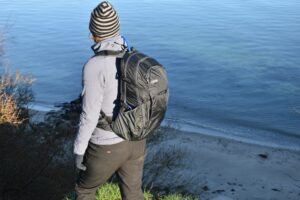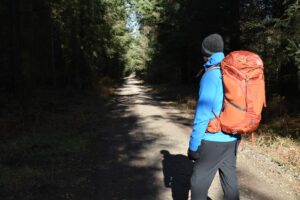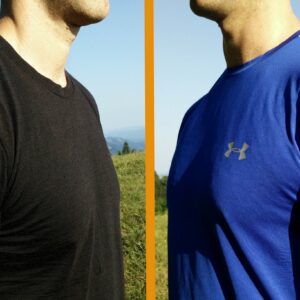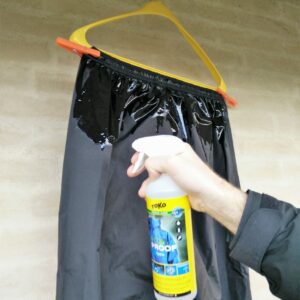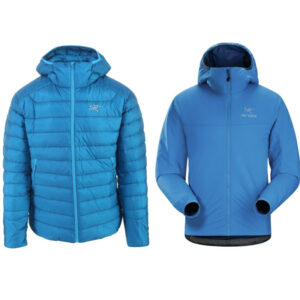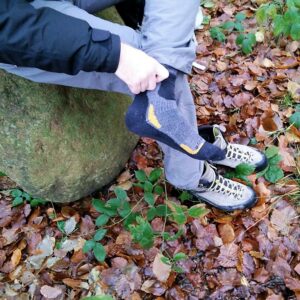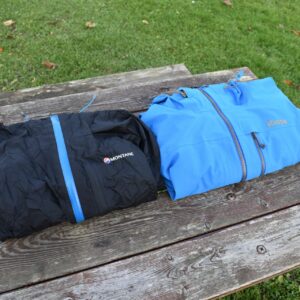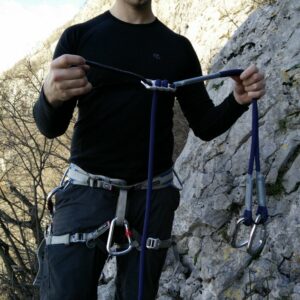Buying a new backpack and not sure what size you need? In this article we’ll explain how to choose the right backpack size for your needs. Choosing the right size of backpack is tricky because it depends on many different factors such as duration of your activities, your packing style and quality of your gear. I have three different backpacks (Osprey Talon 22, Osprey Talon 44 and Gregory Paragon 58) as well as a couple of hydration vests (Camelbak Circuit and Nathan Vapor Air). Due to the wide range of my activities, I do actually need that many different packs and vests. Nevertheless, it’s true that for 80% of my activities I use the Osprey Talon 22 daypack. In the following I’ll help you choose the right size of backpack for your needs. Let’s start with a quick overview and then explain what each backpack’s size is suitable for.
Table of Contents:
Quick Overview
| Backpack Volume in Liters | Lightweight Packing | Normal Packing | Heavyweight Packing |
|---|---|---|---|
| 0-10 l | Day hike | / | / |
| 10-20 l | Day hike | Day hike | / |
| 20-30 l | Day hike | Day hike | Day hike |
| 30-40 l | Overnight | Day hike | Day hike |
| 40-50 l | 2-3 nights | Overnight | Overnight |
| 50-60 l | 4+ nights | 2-3 nights | 2 nights |
| 60-70 l | 4+ nights | 4+ nights | 2-3 nights |
| 70-80 l | 4+ nights | 4+ nights | 4+ nights |
In the table above we explain what size of backpack is suitable for what activities depending on your packing style. If you’re used to only bringing essentials and have high-quality gear opt for the lightweight packing style. If you typically bring more than the others when going out hiking, choose the heavyweight packing style. The normal packing style is, however, what applies to most people.
The volume in the table refers to the amount of space available in a backpack. The volume is measured in liters and can range from a few liters to as much as 100 liters. Nevertheless, backpacks with a volume of more than 70 liters are typically used only for special purposes. Hiking backpacks usually have their volume stated in their names. For example, the Gregory Paragon 58 backpack has a volume of 58 liters and is suitable for 4+ night trips if you pack lightweight and for 2-night outings if you typically bring more than the others when you go backpacking.
Note that weather conditions also have an impact on how much space you’ll need in a backpack. In winter, you’ll of course bring more gear. For example, warm insulation layers, shell layers, crampons and a winter sleeping bag in case of a multi-day outing.
Now, let’s investigate backpack sizes and explain what each size range is suitable for.
Backpack Sizes Explained
0-10 liters
In this category we have lumbar waist packs, hydration vests and small hydration packs. Products in this category are only suitable for minimalist and lightweight hikers. In these products you’ll fit:
- Hydration bladder
- Two soft flasks, if product is designed to carry soft flasks
- Power bars, gels and maybe a sandwich
- Shell layer such as a lightweight rain jacket
10-20 liters
In this category we find small daypacks. Most people can pack all they need for a one-day hike in such a daypack. Examples of daypacks in this size range are Osprey Daylite 13, Deuter Speed Lite 17 and Black Diamond Pursuit 15. In a daypack with volume from 10 to 20 liters you can expect to fit:
- 2 liters of water
- Snacks for the whole day
- Insulation layer such as a down jacket, fleece jacket or similar
- Shell layer like a rain jacket or softshell jacket
- Accessories (GPS device, compass, headlamp, suncream etc.)
20-30 liters
This is the most popular size for daypacks. In a daypack with this volume everybody should be able to pack everything they need for a day hike. Daypacks in this category also work well for via ferratas because they provide enough space for via ferrata set and climbing harness. They are also perfect for day hikes in winter. In such a daypack you’ll be able to fit:
- 3 liters of water
- Plenty of food for the whole day
- Insulation layer such as a down jacket, fleece jacket or similar
- Shell layer like a rain jacket or softshell jacket
- Accessories (GPS device, compass, headlamp, suncream etc.)
- Extra gear such as climbing harness, via ferrata set, crampons etc.
30-40 liters
Products in this category are hybrids between daypacks and backpacks. Panel-loading packs of this size are typically designed for day hiking while top-loaders can also be used for overnight hikes, especially if you have high-quality gear. In such a pack you’ll be able to fit:
- 3 liters of water
- Food for two days
- Insulation layer such as a down jacket, fleece jacket etc.
- Shell layer like a rain jacket or softshell jacket
- Accessories (GPS device, compass, headlamp, suncream etc.)
- A super packable sleeping bag (down insulation)
- Ultralight one-person tent, bivy sack or half of a two-person tent if you’re hiking with a partner
- High-quality inflatable sleeping pad
40-50 liters
This is the most popular backpack size range for overnight hiking. Most people can fit everything they need for an overnight hike in a backpack with this volume, even if their gear is not of the highest quality. In backpack with the volume between 40 and 50 liters you can expect to fit:
- 3 liters of water or more
- Food for two days
- Backpacking stove
- Insulation layer such as a down jacket, fleece jacket etc.
- Shell layer like a rain jacket or softshell jacket
- Accessories (GPS device, compass, headlamp, suncream etc.)
- Sleeping bag
- Two-person tent or similar portable shelter
- Inflatable sleeping
- Extra clothing
50-60 liters
These backpacks are perfect for multi-day hiking. They enable you to carry everything you could in the previous size range (40-50 liters) with extra space for food, water, clothing, equipment for cooking and bulkier sleeping gear.
60-70 liters
Backpacks in this size range are great for either very comfortable multiday hiking or multiday hiking in very cold conditions, where bulkier and more insulated gear is required. Some backpacks of this size come with detachable daypacks so you can do quick ascents during multiday trips. For example, Osprey Aether 60 Plus backpack has a removable top lid which converts into a daypack. These backpacks are only suitable for multiday outings.
70-80 liters
Backpacks within this size range allow you to carry everything that backpacks in previous size ranges could accommodate with extra space for various items. These backpacks are typically too spacious for most people because the person won’t be able to carry such a heavy load anyway. Nevertheless, there are cases where such a big backpack is useful. For example, expeditions in very cold climates.
The bottom line
What’s the right backpack size for you depends on the activities you’ll be doing (duration), your packing style and quality of your gear. With the help of the table above and descriptions of various size ranges, you should be able to find the right size of a backpack for your needs. If you’re in doubt about what size to choose, we recommend going for the larger size. A bit empty backpack is still better than leaving stuff at home because of insufficient space.
I’d love to hear about your thoughts about sizing a backpack. Write them in the comments below.

